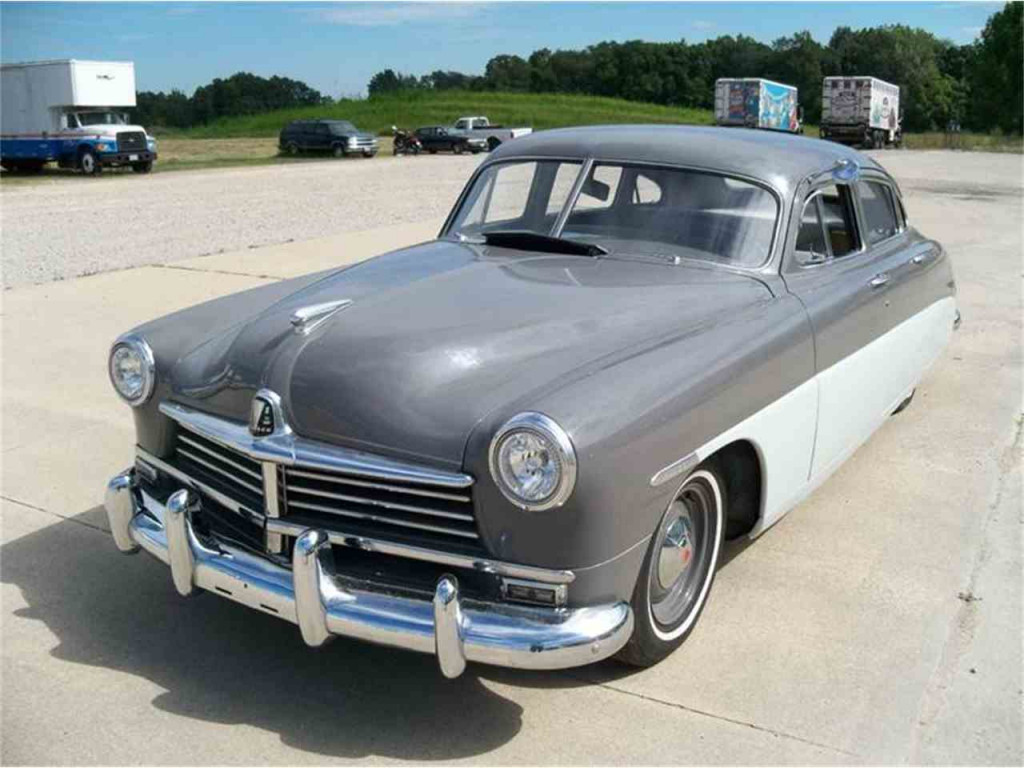Although the term “muscle car” wouldn’t become a widely used nickname until a decade or more later, Detroit automakers got into the act shortly after World War II, producing some very muscular machines.
Midway through the 1949 model year, Oldsmobile unveiled its new 88 series, a car that was lighter than the 98 but was powered by the same Rocket Eight engine, heralded as Detroit’s first modern, high-compression, overhead-valve V8.
Early Oldsmobile advertising suggested that you “Make a date with a Rocket Eight.” However, with the success of the 88 model, the engine soon became better known as the Rocket 88.
“The 88 truly was a rocket,” Allan Girdler wrote in his book on American stock car racing.
As the Standard Catalog of American Cars notes, “The 1949 Olds 88 sedan could go 0-to-60 mph in 12.2 seconds and run the quarter-mile in 19.9 seconds, which was fast for the time.”
The engine was a 303cid V8 with 136 horsepower and, significantly, 263 pound-feet of torque.
Not only was the Rocket 88 featured as the pace car for the 1949 Indianapolis 500, but in 1950 an unheralded 22-year-old racer from Oregon, Herschel McGriff, drove his father’s 1950 Oldsmobile 88 to victory in the Carrera Panamericana, the Mexican Road Race.
Hudson also had a hot setup. In 1948, it launched its Super Six engine, good for 121 horsepower, and three years later that powerplant grew into the 308 Hornet, a 6-cylinder that packed the punch of 145 horsepower (more than Hudson’s own Commodore Eight) and for several years the “Fabulous Hudson Hornet” would dominate stock car racing and would inspire the character of Doc Hudson in the movie "Cars."

1949 Hudson Super 6
Upping the ante quite considerably in 1955 was Chrysler with its “letter series” of cars propelled by the most powerful passenger-car engine yet from Detroit, the 331.1cid FirePower (aka “Hemi”) V8. Chrysler was so impressed that it labeled the first car to carry this engine as the 300 in honor of the engine’s 300-horsepower output.
The key to achieving such performance was equipping the engine with cylinder heads that featured a hemispherical shape and provided room for larger intake and exhaust valves, and for the spark plug to be placed in a more-efficient center location above the combustion chamber. To further enhance combustion, pistons had domed profiles.
Development of such an engine had begun during World War II as part of Chrysler’s work on the Thunderbolt P-47 fighter aircraft and for the Patton tank.
Though a full-size car with luxurious accoutrements, including leather interior and the grille from the upscale Imperial model, the 1955 Chrysler 300 also had a pair of four-barrel carburetors, a racing camshaft and heavy-duty suspension, and it was ready for the stock-car racing circuit.
For 1956, Chrysler rolled out the 300B with an even larger and more powerful engine, the 354 Hemi, offered in the customer’s choice of 340 or 355 horsepower.

1956 Chrysler 300B
A 300B set a world passenger-car speed record of 133.9 mph in time trials on the hard-packed sand of Daytona Beach, Florida.
The letter series would continue through the 1965 model year and the 300L.
This article was originally published on ClassicCars.com, an editorial partner of Motor Authority.